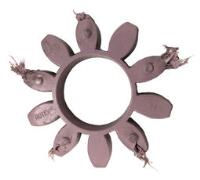 Add My Company
Add My Company
Sign In
Spider Issues Part 2: Vibration
24-01-2020

As a manufacturer of flexible couplings for power transmission, KTR faces many challenges, including identifying how and why a coupling has failed. In some cases, failure may arise as a result of an improper initial selection. Other times it could be down to incorrect installation or a fault with the coupling itself.
However, failure of a coupling may also be regarded as a success, as we need to remember that quite often the very nature of a coupling is to act as a fuse within the system, handling misalignments, shock loads etc., and ultimately failing when these issues reach a critical level. In these extreme scenarios the coupling is sacrificed, the transmission of power interrupted, and the larger, more costly components (pumps, motors, etc.) are hopefully preserved and safety maintained. Success!
But even in “successful” situations such as these, the underlying issues of the failure still need to be identified and resolved. Which brings us to the issue of vibration.
With regards to KTR’s most popular design, the ROTEX® jaw coupling, issues of extreme vibration are well documented and when experienced, the polyurethane elements display an unmistakeable identifying characteristic… the tips of the spiders emit spaghetti!
The heat created by the strong vibration causes the inside of the spider lug to heat up and melt. Centrifugal force then causes the melted material to squeeze out from the tip of the spider lugs, forming spaghetti-like shapes. As seen in the images below, the emission of the “spaghetti” is a result of the heat generated by strong vibrations, possibly when a coupling has been operating in a resonance range.
For more information on Spider Issues Part 2: Vibration talk to KTR U.K. Ltd
Enquire Now
List your company on FindTheNeedle.

